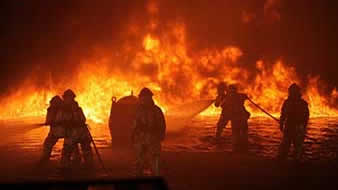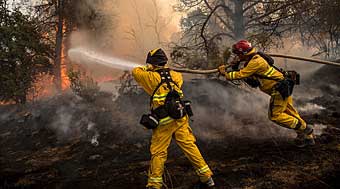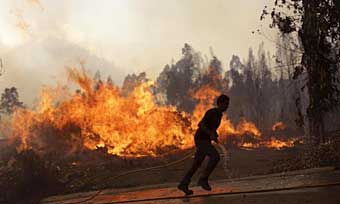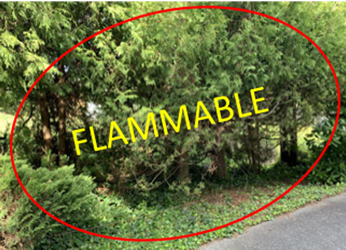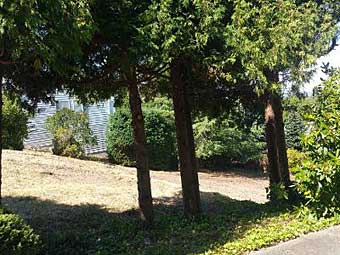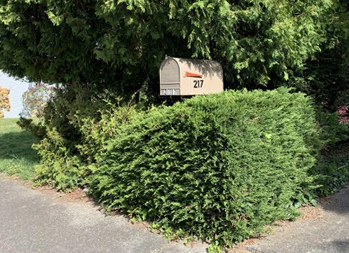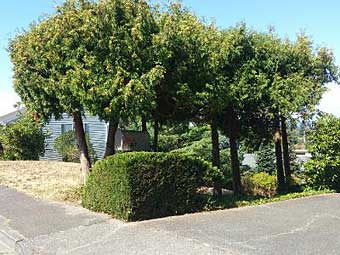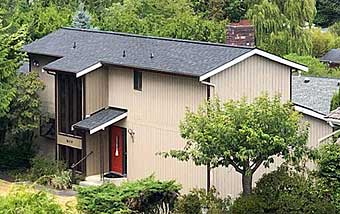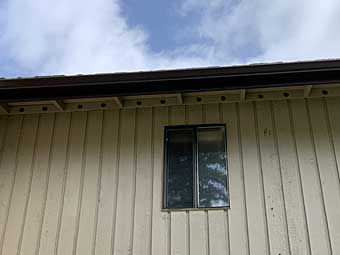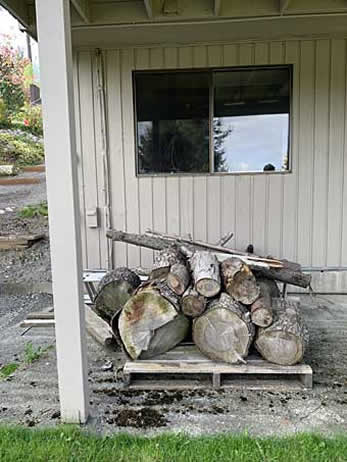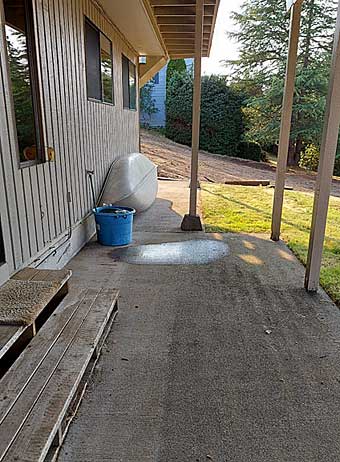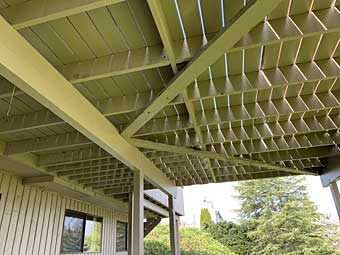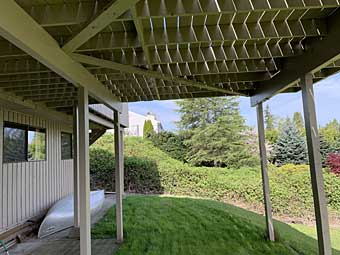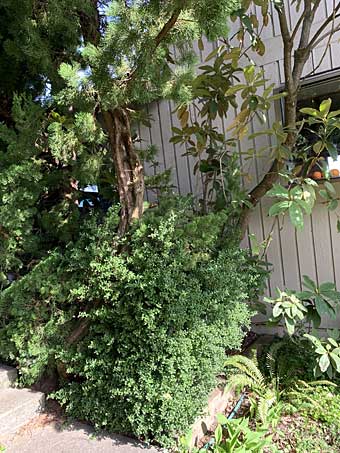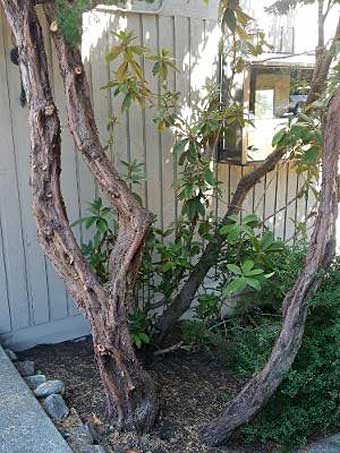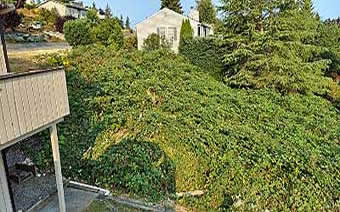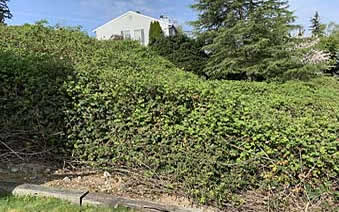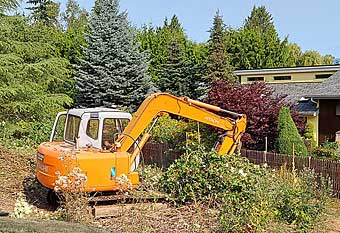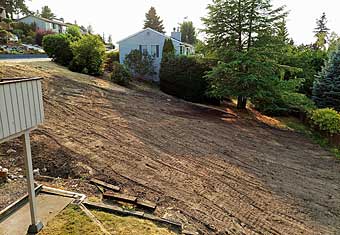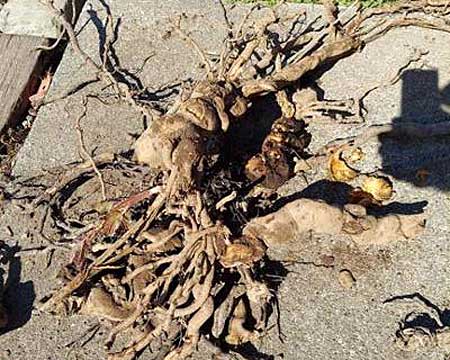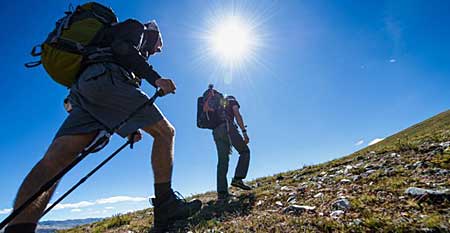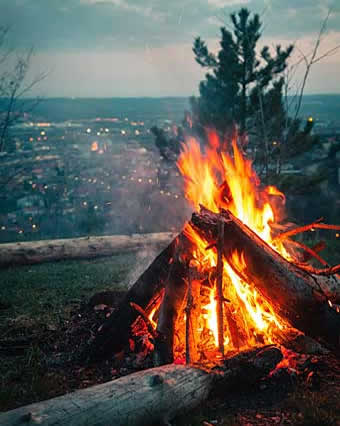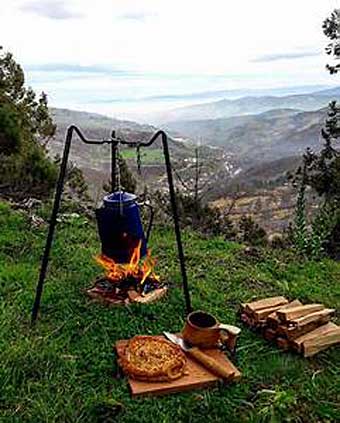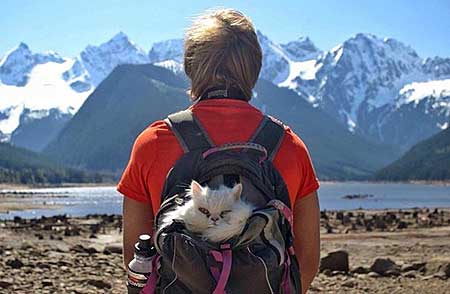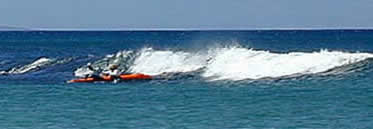
JULY/AUGUST 2023, OUR 25TH YEAR
WILDFIRE PREVENTION AT HOME, CAMPSITE AND ON TRAIL |
||
Story by Lynn Rosen, photos by Lynn Rosen, Steve Giordano and as attributed |
We are on the cusp of the dreaded forest fire season where the threat of fire danger due to predicted extreme temperatures, increased winds, and prolonged drought in the early summer months, is preparing the Western regions of the North American continent for burn bans and eagle-eye watch. Although recent torrential rains in this part of the country have eased the draught alerts, wildfires and resulting home, property, and life loss have not been ruled out for the coming months. Here are some proven remedies to prevent personal and property damage and loss. PROTECT YOUR HOME
Here's a story NIGHT OF THE INFERNO about saving one's home with garden hoses (and the help of a firefighter who was a dinner guest). The author made a scary choice to not evacuate and it paid off.
Evergreen shrubs or trees like these, originally planted as attractive landscaping five to 30 feet from your house, now, with low branches and overgrown underbrush, provide a flammable tinder box for embers, and then flames. Trim branches six to 20 feet from the ground, remove flammable plants, install non-combustible mulches, fire-resistant plants and/or crushed stone and gravel in the flower beds next to your house and maintain vegetation annually. The first five feet immediately surrounding your home should be a non-flammable zone. Clear any obvious brush and have it hauled away to a safe deposit area.
Do not store flammable materials (firewood, wood scraps, charcoal gas cans, etc.) next to the house to prevent embers from blowing in, lodging, smoldering and eventually catching the siding on fire. And it goes without saying - do not store propane tanks anywhere near the house.
If it’s attached to the house, it’s part of the house. Decks and fences that are attached to the house can also carry fire to it. Places where tree debris tends to collect (in the deck corners and cracks where the deck board meets the siding on the house) is the same place where embers will collect when they are picked up by the wind. Embers landing in dry, dead vegetation allows them to smolder and gain heat intensity, thereby igniting deck board and/or siding. Regular sweeping or using a leaf blower to remove that debris can prevent possible ignitions from wind-blown embers.
Keep junipers, cedars, cyprus and all trees surrounding and near your house trimmed so that there are no branches near the ground. This reduces the ability of fire to climb from vegetation on the ground up into taller tree branches where it is more difficult to manage. Keep in mind that evergreens don’t have to have dead needles to feed a fire. They are extremely flammable even when green and healthy due to the presence of pitch.
This mass of blackberries covering the entire adjacent lot is quite flammable. In large thickets like this there are typically a lot of dead canes under all the green which will rapidly carry fire. The best solution is to bulldoze to get rid of the root balls and debris. Blackberries are an invasive species and quite tenacious. This lot will need constant root-pulling, trimming and/or re-seeding with a cover crop such as crimson clover, which is a weed retardant. Regular mowing often will take care of keeping the bushes at bay once the root balls have been eradicated. Eliminating the blackberry roots and shoots may take a few years of constant diligence.
The bulk of this section of the story was sourced from a Whatcom Conservation District wildfire risk report done by Jenny Coe, Resource Specialist, Community Wildfire Resilience. She also provided many of the images used here which were originally included in her thorough assessment report for the homeowners. Check with your local conservation districts to inquire about free fire risk assessments on your home. For further information regarding wildfire risk reduction and how to make your house safer during wildfire season, visit https://www.whatcomcd.org/wildfire. Although this link refers specifically to Whatcom County, WA, the information you’ll find there is relevant to wildfire prevention anywhere on the globe. See more complete contact information below. Community Wildfire Resilience Coordinator HIKE AND CAMP RESPONSIBLY
Before you go, check for current fires in the area where you’re headed. Apple’s free Wildfire Fire App and Weather Underground for Iphone and Android list bans, closures, etc. Also check air quality to see where you should go and where you should not - or if you ought to just stay home. Familiarize yourself with the geographical area and the surrounding road and highway systems. Make a plan B for evacuation just in case you happen to get cut off. Be sure to tell family and friends where you’re going and for how long. And stay in touch with someone. This is especially life-saving-important if a fire risk develops.
If fires are allowed where you’re hiking or camping, make sure that you both build and put out your fire responsibly. If there is no elevated BBQ device or established fire pit at your campsite, clear back any other nearby flammable debris and make your own solid fire ring. NEVER leave your fire unattended and make sure it is completely out before leaving the site or retiring for the night. If it’s too hot to touch with the back of your hand, it’s too hot to leave it. If you’re using a portable stove, be extremely careful. It goes without saying, but use only approved camp stoves. Of course, if there is a burn ban in place, there is no excuse for having a fire or lighting a camp stove. Have a cold meal instead. This may seem trivial, but many wildfires are started by sparks from a dragging metal chain. If you’re pulling a trailer, make sure the hitch chain is not hitting the ground as you drive. You would probably never even notice that just one small spark behind you had begun to cause smoldering embers alongside the roadway.
Even if you’ve made long-standing plans to hike or camp, if, on your way to your destination, cautions about fire danger develop and you feel uncomfortable or that it might be questionable for you to continue, just turn around. There will always be another time, another plan, another trail or campground. But, as the song says, there will never be another you. For more information and tips on backcountry hiking and camping, visit: https://www.campendium.com/camping/camping-with-wildfires
|
